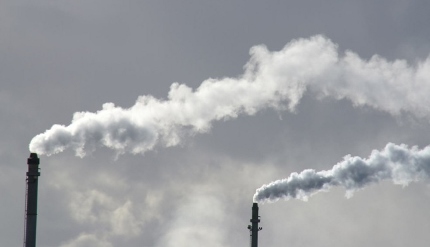Indian negotiators – some of whom are now in Bonn for the ongoing talks of the subsidiary bodies of the United Nations Framework Convention on Climate Change (UNFCCC) – have been asked to seek clarifications from their Chinese counterparts. Most important, they want to know if China will agree to make any emission cap legally enforceable under an international treaty.
India has so far been strongly against any legally enforceable emission cap. During the UNFCCC summit in Durban in December 2011, then environment minister Jayanthi Natarajan had made an impassioned speech in the middle of the all-night final plenary session, pleading for the right to development of millions of Indians, and thus ensuring – at least for the time being – that a legally enforceable cap would not be the only treaty option.
The Chinese delegation was then India’s staunchest supporter, as it has been at least since the landmark 2007 UNFCCC summit in Bali. Both countries led the developing world into demanding their right to develop without any emission cap, while insisting that the rich world tighten the caps on its own emissions that have been responsible for most of global warming since the start of the Industrial Age.
But now He Jiankun, chairman of China’s Advisory Committee on Climate Change, has said, “The government will use two ways to control CO2 (carbon dioxide) emissions in the next five-year plan, by intensity and an absolute cap.” China’s next five-year plan starts in 2016.
Both China and India made voluntary pledges in 2009 to reduce the carbon emission intensity per unit of GDP – India by 20-25% by 2020 compared to 2005 levels, and China by 40-45%. Right now China is the world’s highest carbon emitter, followed by the US and India.
India’s new government has not yet made up its mind on the stance it will take at UNFCCC negotiations. As an active member of the global legislators’ organization on climate change GLOBE – and its first India head – current Minister for Environment, Forests and Climate Change Prakash Javadekar understands the issues and knows the various pressure groups.
“We can’t be shown as a villain. We will play a positive, proactive role. We will provide a new vocabulary on which the world will react,” said Javadekar while addressing the press and media on World Environment Day. But he is less than a fortnight into his ministerial job, and officials in the ministry say he has not yet discussed the issue with them. One possible reason is an expected ministry expansion, and Javadekar does not know which of his two portfolios he will be asked to keep – environment or information and broadcasting.
Given this situation, Indian officials have little choice but to carry out a holding operation at the ongoing Bonn talks, their colleagues and ex-negotiators say.
With climate change gathering pace, its effects showing and the Intergovernmental Panel on Climate Change coming up with grave findings in its recent reports, no one in New Delhi disputes that human-induced carbon emission need to be reined in. As before, the question remains, who should do it?
Indian officials repeatedly point out that the country’s per capita emissions are one-tenth of that in the US and one-fifth of that in the European Union. Now with China “breaking ranks” – as some of them put it – they also point out that per capita emissions in India are about 40% of that in China, and that India needs to provide electricity to about 400 million people who are still outside the grid.
In this situation, Indian negotiators fear isolation by the international community in the run-up to the proposed Paris treaty in end-2015, and expect increased pressure from rich countries to sign up to an emission cap that will be legally enforceable after 2020. A recent study of a low-carbon development pathway predicted that India’s emissions will rise at least till 2030.
That is why Indian officials are anxious to know what China is planning. A day after He Jiankun’s statement, the Indians were reassured when the Chinese foreign ministry spokesperson did not make any reference to it, and limited himself to hoping the recent cap on emissions from coal-fired power stations announced by US President Barack Obama would be effective.
Though India has not said anything officially, in private Indian bureaucrats are rather dismissive of the Obama announcement. They feel it goes no further than Obama’s 2009 voluntary pledge that the US would slash its emissions by 17% by 2020, compared to 2005 levels.
However, the Indians fear American negotiators will use the recent Obama announcement to pile more pressure on India to sign up to a legally enforceable cap. The stance that India will take will probably be better known in September, when climate change will be the main topic at the annual UN General Assembly session. India’s new Prime Minister Narendra Modi is expected to attend the session and have a summit meeting with Obama immediately afterwards. Indian climate negotiators are now trying to ensure that climate change forms parts of the agenda at the bilateral summit.

